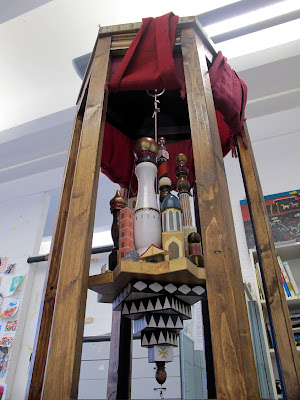Back in 2007 when I had just moved to Glasgow, I bought two books - Description of the World by Herodotus and Travels with Herodotus by Ryszard Kapuściński. I really just wanted to buy Herodotus' classic, but it so happened that Kapuściński's book was on a Buy One, Get One HALF PRICE offer. Four years later and I finally managed to read both books starting of course with Description of the World. Herodotus' book made for a heavy and at times uninteresting read loaded as it is with details of puzzling family lineages and bloody royal skirmishes. But Herodotus, the father of history, is at his best when he abandons all the technical pecularities and delves into describing foreign (ie non-Greek) cultures. He does this with a kind of childlike amazement which might not be immediately evident when describing cultures closer to his home but verges onto fantasy when writing about far-away tribes and civilizations. Werewolves, flying snakes and a whole nation of dwarves? They were all there somewhere in Herodotus' world.
These chapters I thought were the highlights of the book. There's something mind-expanding and even comforting about the fact that cultures have always been in constant flux and motion ever since the dawn of mankind. Cultures mutate, call themselves different things over time, devour eachother up, give birth to new ones and a (at least) 2500 year-old pattern can only mean that this is how it will always be. I find it comforting in this sense, even if I know that in a few years only a tiny fraction of our 6000 languages will still be in use.
Kapuściński's Travels With Herodotus dwells on such matters. He basically made Herodotus' classic much more interesting to me. Kapuściński, the great Polish journalist and traveller, extracted these bits and expanded on them by inquiring and trying to imagine himself as a journalist in Herodotus' time or vice versa. He treated Herodotus as a buddy and by sharing their travels together came up with some amazing observations. The stuff that Kapuściński wrote down in this book is stuff which I think about most of the time, and simply seeing these thoughts alive and put into words developed in me some kind of camaraderie with the man, perhaps in ways similar to Kapuściński himself and Herodotus.
Here are some extracts which I felt I related the most to. I like to think that lines like these feed into my illustrations somehow.
"Herodotus was therefore a Greek Carian, an ethnic half-breed. Such people who grow up amid different cultures, as a blend of different bloodlines, have their worldview determined by such concepts as border, distance, difference, diversity. We encounter the widest array of human types among them, from fanatical, fierce sectarians, to passive, apathetic provincials, to open, receptive wanderers - citizens of the world."
"Yes, Herodotus is never shocked at difference, never condemns it; rather, he tries to learn about it, to understand and describe it. Difference? It serves by some paradox only to emphasize a greater oneness, speaking to its vitality and richness."
"Traveling and encountering various tribes and peoples, Herodotus observes and records that each of them has its own history, which unfolds independently from yet parallel to other histories - in other words, that far from being one story, human history in its aggregate resembles a great cauldron whose perpetually simmering surface sees incessant collisions of innumerable particles, each moving in their own orbits, along trajectories that intersect at an infinite number of points."
"Herodotus learns about his worlds with the rapturous enthusiasm of a child. His most important discovery? That there are many worlds. And that each is different.
Each is important.
And that one must learn about them, because these other worlds, these other cultures, are mirrors in which we can see ourselves, thanks to which we understand ourselves better - for we cannot define our own identity until having confronted that of others, as comparison."
























